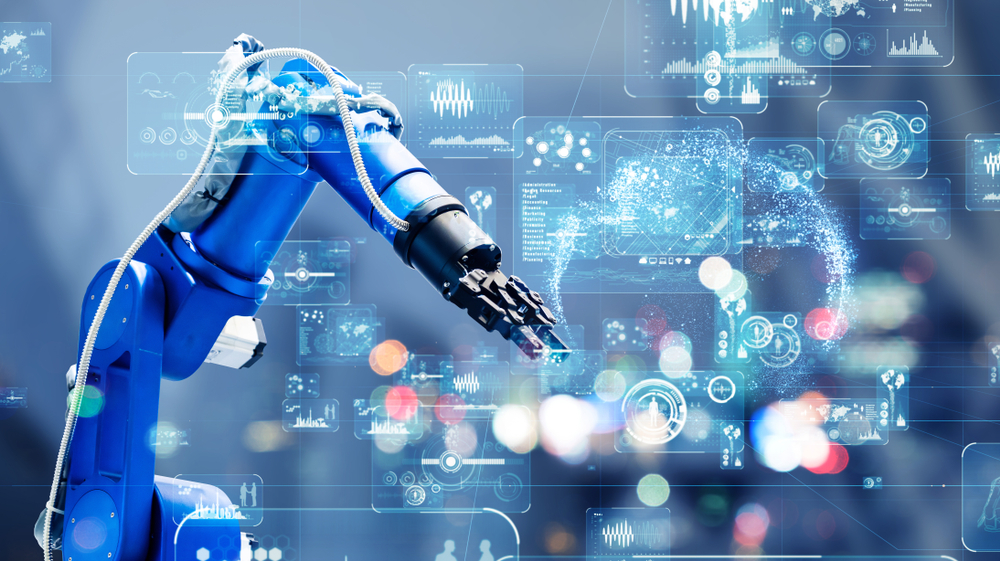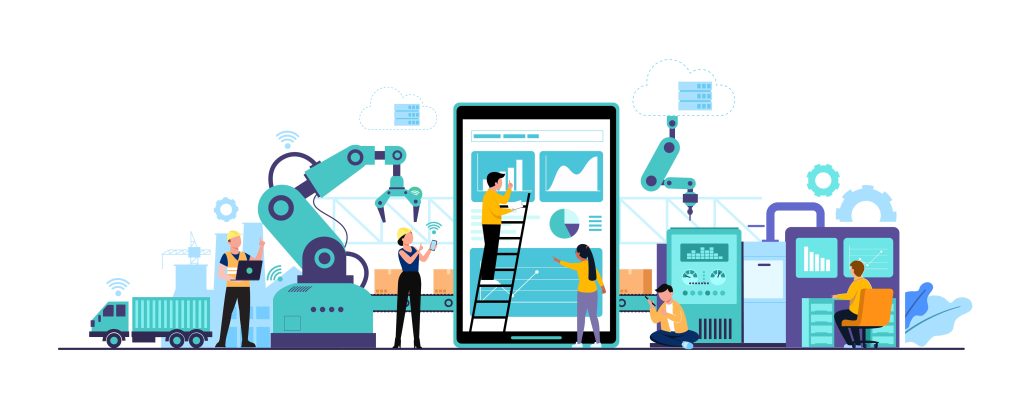In the fast-paced world of the industry today, smart factory technology is making waves as a key driving force behind major improvements in manufacturing. That’s why it’s crucial for business leaders and decision-makers to stay in the loop with these developments in order to keep their competitive edge in Industry 4.0, where the stakes just keep getting higher by the day.
Now, there are various ways that smart factory technology can influence businesses and showcase its remarkable effects on efficiency, productivity, and overall success. This is why grasping the potential of Industry 4.0 technologies, you’ll be well-equipped to embrace these innovations and secure a bright future for your organization in an ever-changing business landscape.
What are Smart Factory and Industry 4.0 Technologies?
Industry 4.0, also known as the Fourth Industrial Revolution, is a term that represents the ongoing transformation of the manufacturing and production sectors through the integration of material handling automation, digital supply chain, the Internet of Things (IoT), and more.
Smart factories and smart manufacturing are key players in this technological transformation, redefining the way industrial production facilities operate. The term “smart factory” describes an industrial production facility that employs digital technology to optimize processes, enhance efficiency and productivity, reduce costs, mitigate risks, and generate new revenue streams.
Smart manufacturing, an integral component of smart factories, specifically refers to the equipment utilized in manufacturing facilities that are upgraded with sensors and other IoT technologies. This enables the equipment to self-monitor its performance while also communicating with other devices on a network, such as robots. Consequently, manufacturers can ensure seamless operation without the need for constant human intervention, resulting in reduced downtime for repairs or maintenance when issues arise.
Three Components Of A Smart Factory
Smart factory technology relies on three key components to achieve its goal:
1. Sensors and Gateways for Data Acquisition
Sensors detect and monitor data, while gateways transmit information to IT systems. These devices are used to collect and analyze data in real time. This allows you to better understand how operations are running at any given moment, as well as makes it possible for you to make more informed decisions about production processes going forward.
2. Machine Learning and Intelligent Business Systems for Data Analysis
Machine learning and intelligent business systems are used to enhance decision-making. By creating predictive models using historical data, machine learning allows for the anticipation of machine breakdowns and maintenance needs. Simultaneously, intelligent business systems analyze this data and identify patterns and trends using advanced algorithms. These can help you make data-driven decisions, which leads to more efficient processes and reduced downtime.
3. Connected Devices for Intelligent Factory Automation
Connected devices facilitate remote supervision and management of the production process, offer data on usage patterns, and grant real-time information access to personnel across various points via the Internet. This allows staff to see how much energy each machine uses over time, how often it breaks down, and what repairs are needed so you can schedule maintenance accordingly.
Robotic Material Handling Automation
Smart factory technology is also taking material handling to new heights. Robotic material handling automation, often referred to as automated materials handling (AMH), is a smart factory solution to minimize or completely eliminate human intervention in the processes of checking in and out, sorting, and transporting various materials. This is achieved through the use of advanced robotic systems and equipment designed to handle materials in an efficient, reliable, and cost-effective manner.
The implementation of robotic material handling automation in manufacturing facilities, warehouses, and distribution centers can significantly enhance overall efficiency, accuracy, and reliability throughout their processes. Consequently, the advantages of employing automated material handling systems include reduced labor costs, increased productivity, better workplace safety, and a decrease in human error.
In fact, robotic material handling automation has expanded its presence in various industries, ranging from automotive and electronics to pharmaceuticals and food processing. The versatility and adaptability of these systems have allowed them to address unique challenges in each sector, thus, promoting growth and innovation. As technology continues to advance, it is expected that robotic material handling automation will become an even more integral part of modern industrial operations, driving further improvements in productivity, efficiency, and overall competitiveness.
What Are AI Cobots?
AI Cobot is a collaborative robot arm, a native artificial intelligent inferencing engine, and a vision system all in one. AI Cobot also learns from its environment and improves over time as it builds up the experience of what works best for you.
It can also be trained to perform a specific task, reducing the need for manual labor, which saves you time and money. Moreover, it has the ability to learn new tasks on its own, without requiring any assistance from humans. This means that once you’ve taught your AI Cobot how to do one thing (e.g., pick up objects), it will be able to repeat this task over again without any additional help from humans.
In addition, because AI Cobots can work continuously throughout the day without getting tired or feeling pain like humans do after long hours of working at high speeds under stressful conditions — they increase overall utilization rate in factories by reducing downtime due to maintenance issues such as calibration time needed after each movement or breakage caused by wear-and-tear from repetitive movements performed over long periods of time.
Techman Robot’s AI Cobot is a compact robot that can be easily integrated into your production line. With features like automated optical inspection (AOI) and inherent safety sensors, it is built for high-speed production environments. What sets its cobots apart from industry-standard robotic arms is the “AI Vision” technology, which allows them to sense their environment and the people they operate with, thereby boosting production throughout and creating a harmonious work environment as well as eliminating the need for additional external cameras or software packages. Furthermore, the AI Cobot comes with a built-in vision system for real-time object recognition and automated product quality control, ensuring that the production process is accurate and reliable.
In conclusion, robotic material handling automation is becoming increasingly popular in various industries due to its efficiency and cost savings benefits. From warehouse automation to smart factory technology powered by AI Cobots, this technology has revolutionized the way businesses operate. Its flexibility and adaptability to unique challenges make it an indispensable part of any industry. Especially as more businesses embrace these technologies, we can expect continued growth, innovation, and improvements in industrial operations. Indeed, the future of manufacturing is smarter, more connected, and driven by data, ensuring a safer and more efficient working environment for all.


